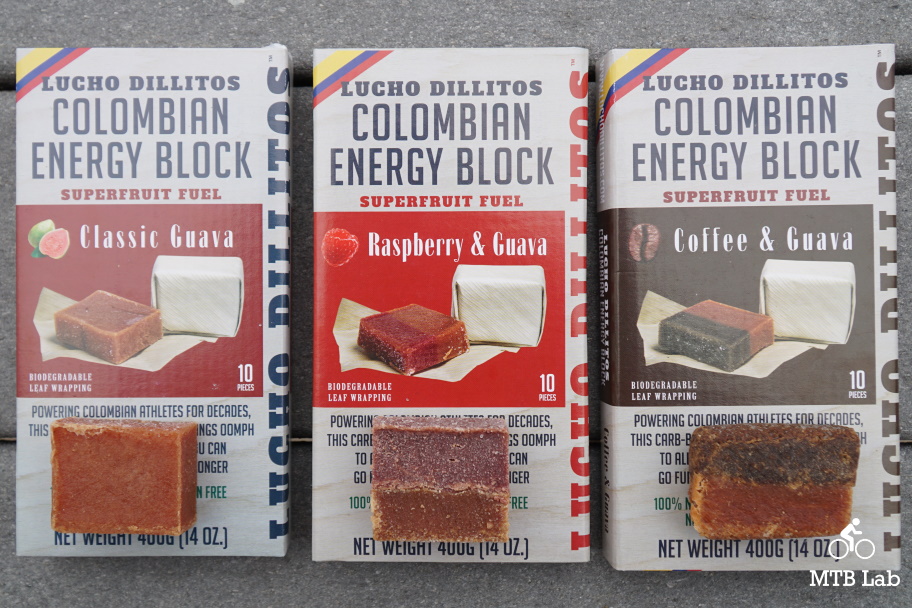
Colombian cyclists have been fueled by Bocadillos energy bars for years to improve their race performances, boost energy, and help replenish energy stores. The simple Bocadillos have only two primary ingredients, Guava, and sugar. There aren’t any additives, preservatives, or flavorings added to the bar, and they wrap the bars in an environmentally-friendly biodegradable leaf. Guava is revered in natural and holistic medicine for its healthy properties, and it’s a nutrient powerhouse, packed with vitamins, minerals, and fiber. The bars are perfect energy supplements for road and mountain bikers, runners, triathletes, climbers, hikers, surfers, and kayakers.
Currently, Lucho Dillitos has three flavors of the Bocadillos, the plain Lucho Dillitos Classic, the Lucho Dillitos Coffee, and the Lucho Dillitos Raspberry. They have a sweet taste and an interesting texture, sort of like a sugary gumdrop and ultra-thick jam. They go down well without being overly sweet or gooey. The bars come in 10 packs for $19, 27 packs for $50, or a 3×10 pack of each flavor for $50.
For additional information refer to luchodillitos.com
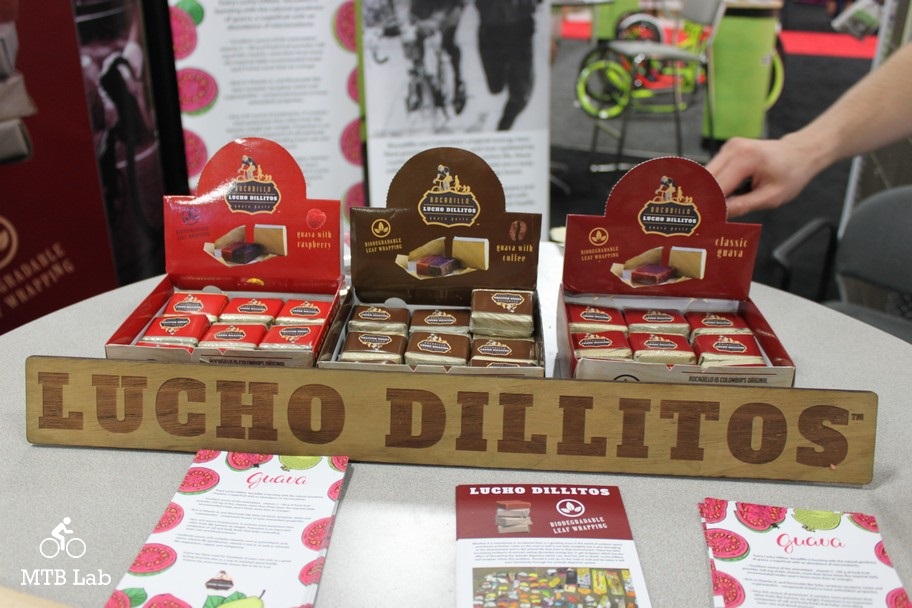
Lucho Dillitos Story
Luchos was named after Luis Alberto “Lucho” Herrera, a road-racing pioneer from the city of Fusagasugá, Colombia. He exploded on the cycling scene when he won the Alpe d’Huez stage at the 1984 Tour de France, thus laying the foundation for subsequent Colombian greats, most recently Nairo Quintana. By chance, their founder David Guthrie, an avid cyclist and runner, came across an article about Colombian cycling that spoke of the energy bars that had powered Colombian cyclists for decades: ‘Bocadillos.’ These bars were made of the superfruit guava and sugar and came wrapped in a dried leaf, and Lucho would stuff his pockets with them for every race. A chance encounter with a Colombian whose mother had sent him a package from home allowed him to try them for himself. “They were delicious, easy to eat, and digest on the bike and gave me the energy boost I needed.” He traveled to Colombia to find the source of these fantastic treats. During a lengthy trip, he was able to find a co-op of producers, working with fair trade farmers who would supply him with traditional high-quality Bocadillos. Thus began David’s quest to bring the wonders of Guava and Bocadillos to the world. All-natural energy bars for any athlete, chock-full of vitamins and nutrients, in an environmentally friendly natural wrapper.
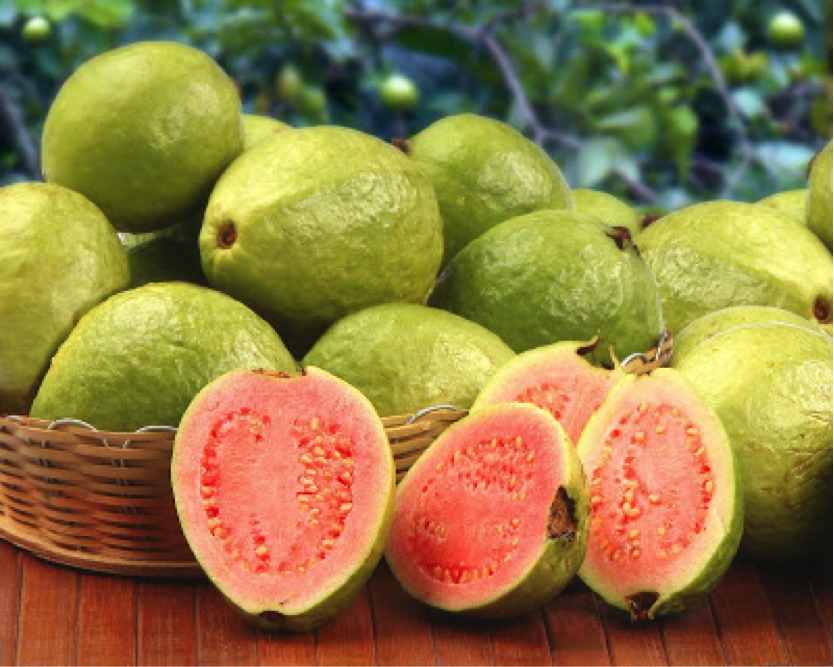
Guava
Guava is a tropical fruit that grows on the Psidium guajava tree, and it’s native to Mexico, Central America, the Caribbean, and northern South America. Currently, Guava is primarily grown in India, followed by China, Thailand.
Guava fruits are amazingly rich in antioxidants, vitamin C, potassium, and fiber. The superfruit remarkable nutrient content gives them many health benefits. Guava may lower blood sugar levels, boost heart health, relieve painful symptoms of menstruation, benefit your digestive system, aid weight loss, have an anticancer effect, boost your immunity, and be good for your skin.
- Excellent source of antioxidant vitamin-C. 100 g fresh fruit provides 228 mg of this vitamin, more than three times the required daily-recommended intake (and four times more than an orange)
- Rich in Vitamin-A, and flavonoids like beta-carotene, lycopene, lutein, and cryptoxanthin. The compounds are known to have antioxidant properties
- A very rich source of soluble dietary fiber (5.4 g per 100 g of fruit, about 14% of DRA)
- A very rich source of potassium. It contains more potassium than other fruits like banana, weight per weight. Potassium is an essential component of cell and body fluids that helps controlling heart rate and blood pressure.
- A moderate source of B-complex vitamins such as pantothenic acid, niacin, vitamin-B6 (pyridoxine), vitamin E and K, as well as minerals like magnesium, copper, and manganese
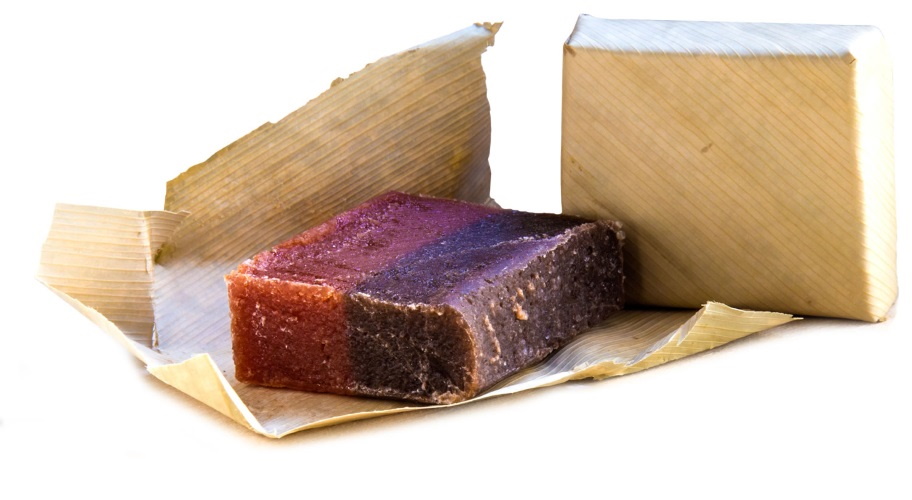
Photo courtesy of Lucho Dillitos
Bocadillo
Bocadillo de Guayaba or Guava jelly/Guava paste is a Colombian confectionery made with Guava pulp and panela (unrefined whole cane sugar) and is consumed abundantly throughout Colombia. Bocadillo can be eaten on its own, accompanied by cheese, or spread onto bread. To make Bocadillo, the guavas are washed, peeled, mashed into a pulp, and strained to remove the seeds. The pulp is cooked in water along with panela/refined sugar until it has a thick consistency, allowed to cool, and then molded into blocks. It’s traditionally wrapped in the leaves of the Bijao (Calathea lutea) to preserve and enhance its flavor.

Impressions
The three flavors of the Bocadillos are made predominately of Guava and Sugar. The plain Lucho Dillitos Classic has a ratio of 85% Guava and 15% Sugar, and the Lucho Dillitos Coffee features 75% Guava and 15% Sugar and 10% Coffee. Lastly, the Lucho Dillitos Raspberry consists of 75% Guava and 15% Sugar 15% and 10% Raspberry. The Classic has the more typical fruity and sweet Guava taste with a heavy pear flavor with a hint of strawberries. The Coffee tosses in a hint of mocha, while the Raspberry has a tad of delicious Raspberry tartness.
Just open up the leaf to find a solid block of the Bocadillo Guava bar. I didn’t find the bar to be sticky to the touch, and it didn’t leave any residue on my hands or fingers. The stiff bar quickly turns into a moist paste in your mouth and is easy to swallow, and offers a sweet taste and chewy and pulpy consistency. The leaf wrapper is brittle and fragile, so it can be tough to re-wrap a bar if you have only partially eaten one, though it at least doesn’t make a gooey mess in your pack or pocket.
They don’t have an overt or overpowering sweetness, and their texture has a nice compromise between a gooey chew and stiff jam. I liked the palatable texture of the bars, which has this sort of consistency of sugary grit and fruit particles floating around in the mixture. It was easy to chew, swallow, and overall went down exceptionally well. The size of the blocks was about perfect for a quick snack, and I usually went through about 2 bars during a 2-4 hour ride, though I would still eat other food items during that period. When it got around freezing out, the bars could get a bit stiff, and they were more difficult to chew, but they were easy to warm with your hand due to their small size and square shape.
As far as a useful energy source, my metabolism used the bars quite efficiently, and I noticed how helpful they were during short and long rides, whenever I was exerting myself. I didn’t feel any bonking, sugar buzzing, etc., and they certainly helped boost energy and replenish energy stores. Since they were so easy to eat and digest, it made it easy to munch them on my rides, and helped keep me energized.
The 40g bars provide approximately 90-120kcal of energy, 23-30g of Carbohydrates (all sugars), 15-20mg of Salt, 25-32mg Vitamin C, 10mg of Vitamin A, 40mg of Calcium, 30mg of Potassium, and 1mg of Iron.
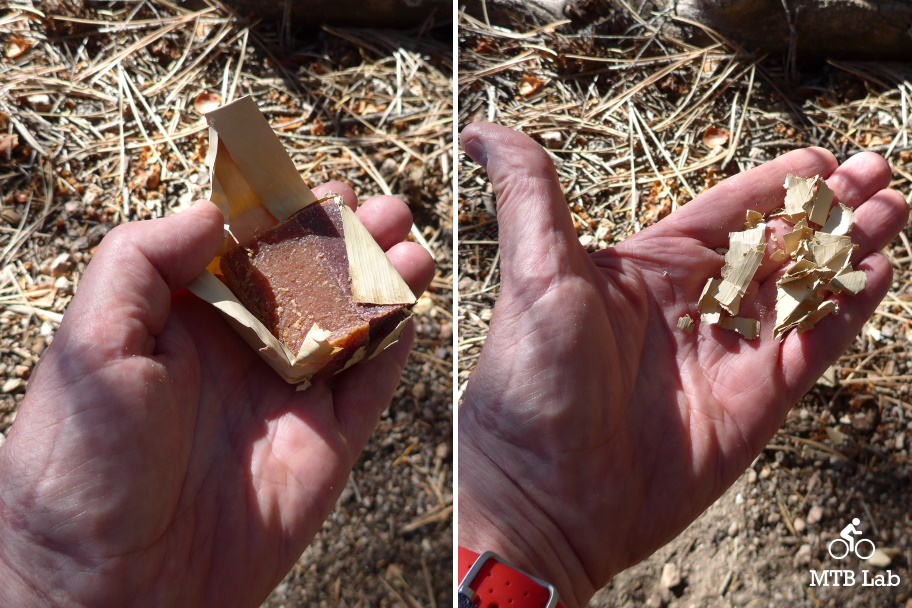
I liked that they’re wrapped in a dried Bijao leaf, making for a biodegradable and environmentally sound container. Just unwrap the leaf from the bar, and pull out the bar to eat. To take care of the wrapper, smoosh the leaf into small pieces in your hand and distribute it onto the ground. You can leave the small leaf pieces pretty much anywhere that leaves, pine needles, sticks, etc., exist outdoors, treat them as biomass and compost. The leaf isn’t native to pretty much anywhere I ride in North America, but I didn’t worry too much about causing cross-contamination issues, though if that worries you, bring them back home. I suppose you could eat the leaf if you wanted, but they don’t seem delectable?
If you might not devour the bars, I’d recommend sticking them in an airtight container to preserve freshness and keep them from getting hard and drying out. I did have any issues with them melting or getting too hot during the brunt of summer, and they were fine even when the leaf wrapper got wet.
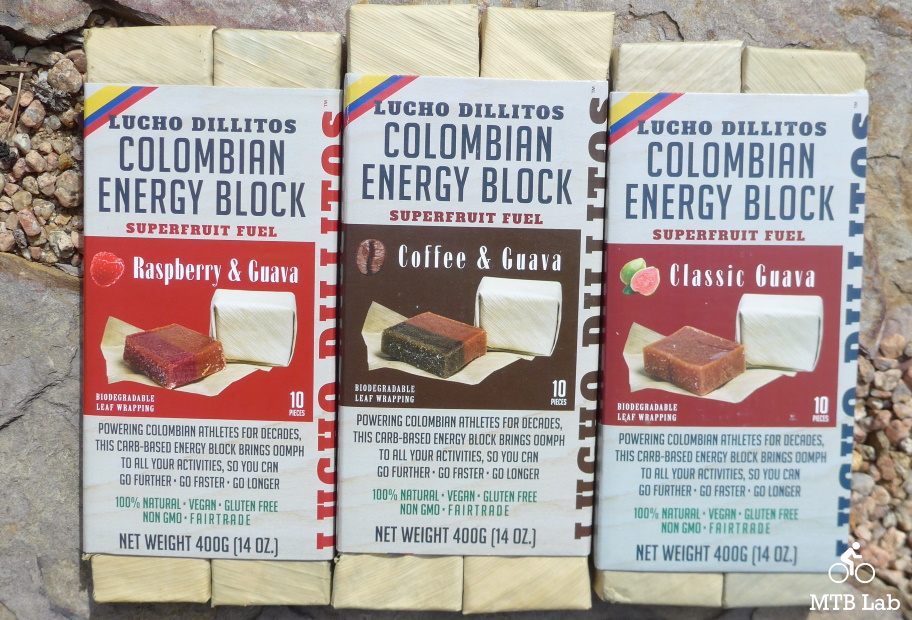
Bottom Line
I enjoyed the Lucho Dillitos Energy Bars, and they were easy to eat, chew, swallow, and digest and provided a quick and functional energy source during athletic activities. I liked the texture, sweetness, lack of mess, and the biodegradable wrapping. They offered a useful energy source and provided the bonus of natural vitamins, potassium, calcium, and iron.
The Bocadillos are solid blocks of delicious guava paste that are dry to the touch and melt in your mouth and are an energy bar and gel rolled into one.





{ 2 comments… read them below or add one }
Hi, I’ve used these energy bars for cycling fuel, as intended, but also during physically demanding training days as an AFO (Fireams Cop) in the UK. Their size allows then to be easily stowed, and easily consumed. Undoubtedly other services/industries could benefit from them as well.
So good at what they do I buy boxes two at time, one at home and one at work.
Glad you enjoyed them!
The MTB Lab